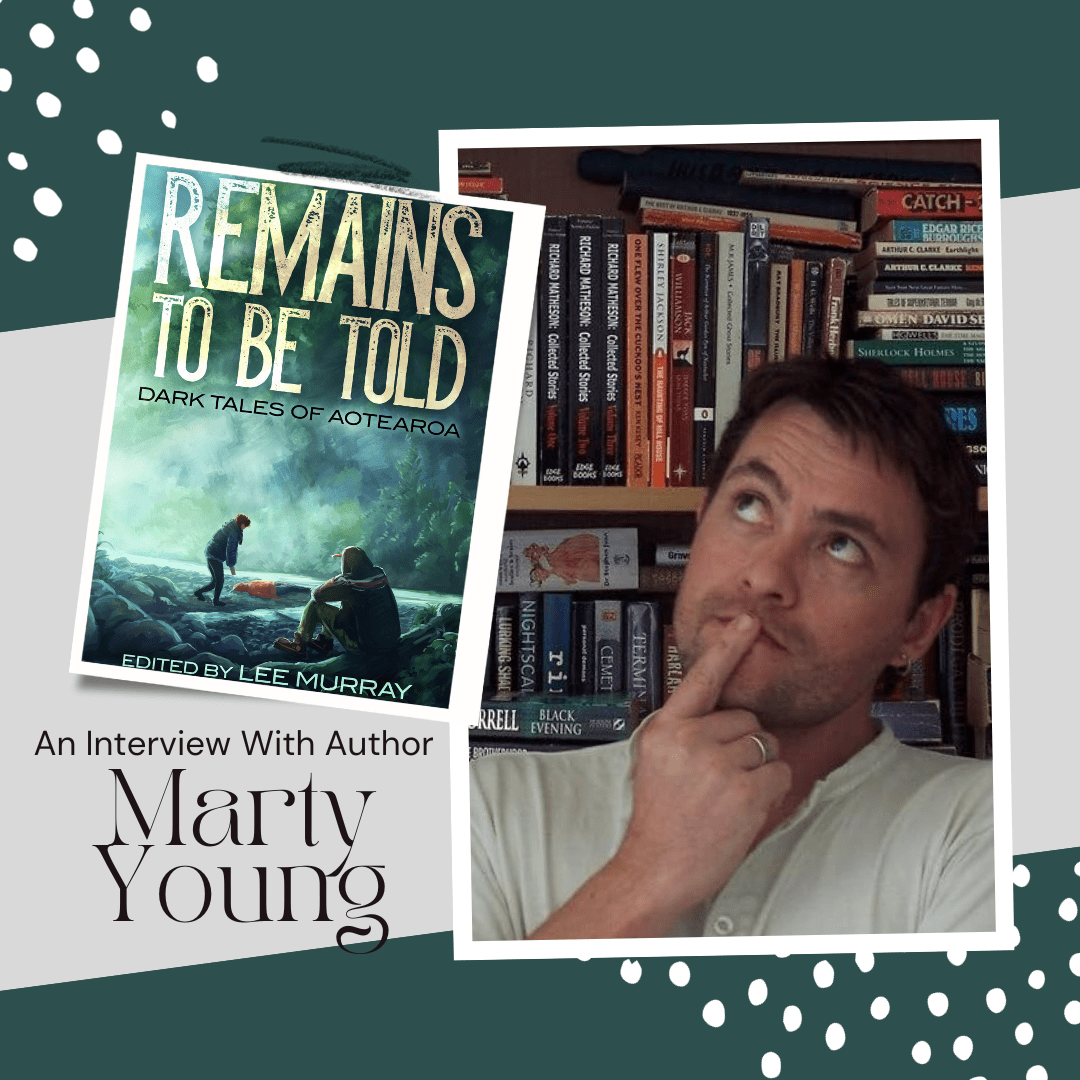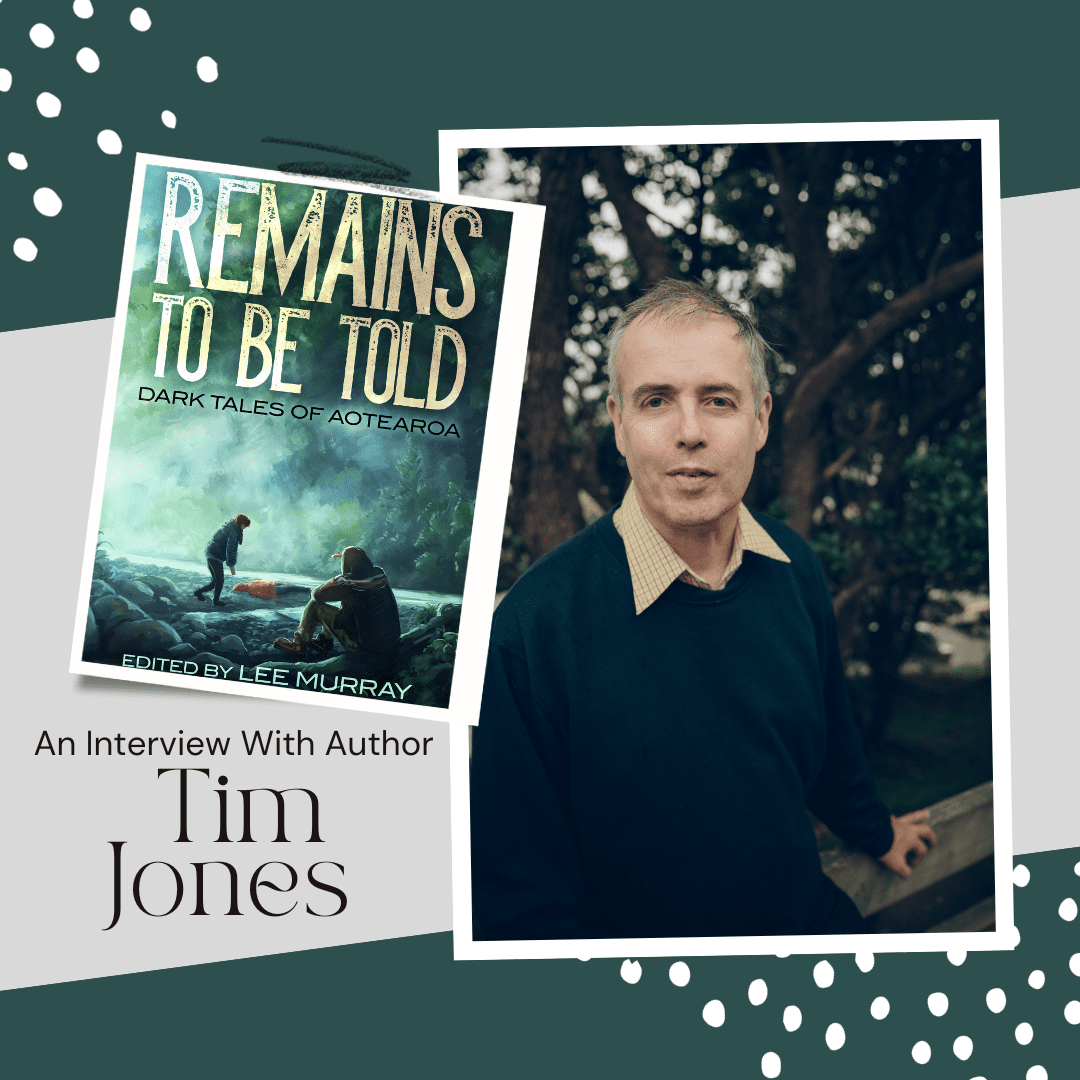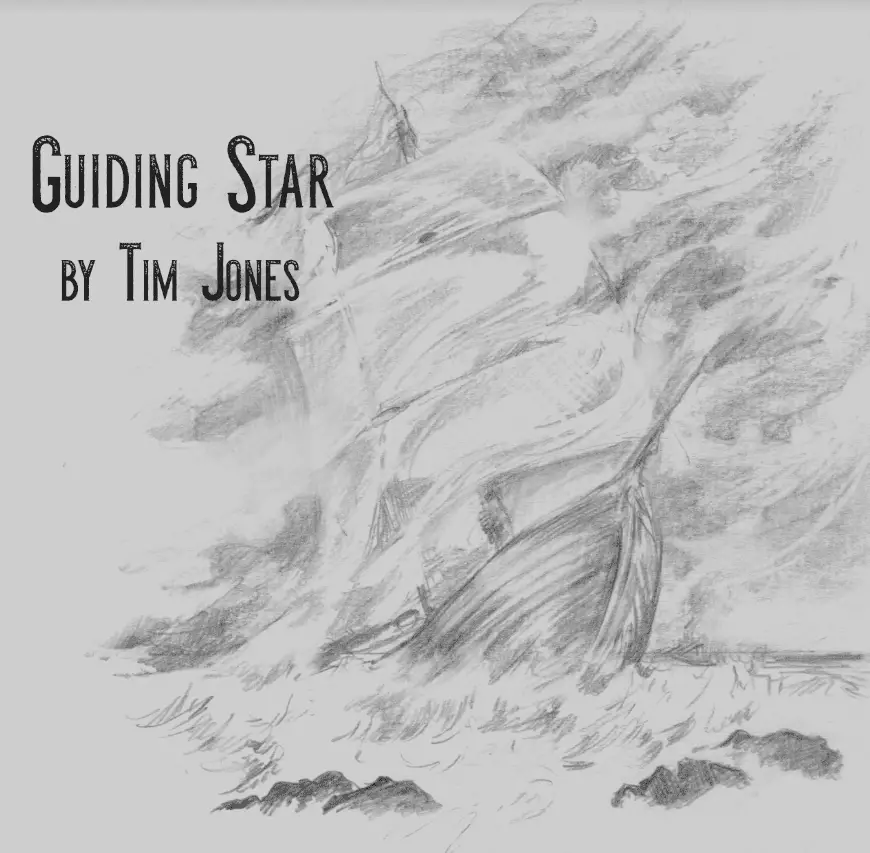
 Meet William Cook: Horror writer, poet, dad, delver into the darkest of minds and ghost lover (her name is Gladys). READ ON!
Meet William Cook: Horror writer, poet, dad, delver into the darkest of minds and ghost lover (her name is Gladys). READ ON!
Ruschelle: William, as a horror writer, I’m glad to see you prepared for our interview. You look good in a top hat and apron stained with blood and entrails.
Speaking of blood and entrails, your stories are not for the squeamish. And that’s just what many readers of the serial killer genre love. What kind of research have you done to create your characters? Did you study specific serial killers from history?
William: There aren’t any particular serial killer cases that inform my stories and I tend to research as much about abnormal psychology as I do about serial killers (in general) and their methods and characteristics. I read both fiction and non-fictional accounts involving serial killer and watch documentaries in order to get a grasp of the psychological aspects of these freaks. I have a large collection of old Detective magazines that are very lurid and descriptive and these provide great fodder for researching crime and criminals. These are the same types of magazines that many of the serial killers from the 70s to the 90s used to read.
Ruschelle: What’s your literary “body count?”
William: Far too many to count although I feel quite happy that my count is only a figurative one and not literal. At least that’s my story and I’m sticking to it! (winks)
Ruschelle: You’re also an artist. Your pieces reek of brutality and dark, sinister entities. My favorite piece is a black and white illustration of a clownferatu. (My name for it) It speaks to me. But I don’t want to go to jail- so I don’t listen. When working with your artwork does your writing inspire your pieces OR do you pull inspiration from what you write- from your art?
William: The piece in question was inspired by none other than Mr. Stephen King’s ‘PennyWise the Clown’ from IT. So in that regard my inspiration came from sources other than my own imagination – all I did was reinterpret it with my own skill-set and materials at hand (charcoal and paper). Usually most of my artworks stem from an interest in a particular subject and are influenced by both visual and textual works. Sometimes, as a happy coincidence, a story or an illustration I have created will inspire a companion piece to go with it.
Ruschelle: Do you have a favorite piece? What is it?
William: I don’t really have a favorite. I get a bigger kick out of other people enjoying them, rather than having a favorite. As soon as they’re done I tend to distance myself from them and move on to the next one. You can see most of the ones I rate as worth public viewing here on Instagram – https://www.instagram.com/thewilliamcook/
 Ruschelle: Fun question- Speaking of Clowns, they’re hot right now thanks to the remake of Stephen King’s It and Twisty the Clown from AHS. If you could be any killer clown for a day (and I can’t prove you aren’t now but if I find out you are- I won’t tell), which do you identify with and why? GO.
Ruschelle: Fun question- Speaking of Clowns, they’re hot right now thanks to the remake of Stephen King’s It and Twisty the Clown from AHS. If you could be any killer clown for a day (and I can’t prove you aren’t now but if I find out you are- I won’t tell), which do you identify with and why? GO.
William: Mmmmmm –killer clowns crack me up as I don’t find them particularly scary. In fact, I find them quite comical. Perhaps the scariest one for me was a real one – the serial killer John Wayne Gacy’s alter-ego, ‘Pogo.’ As far as fictional ones I guess that King’s ‘Pennywise’ rates well for me as I have been involved with this one since reading IT many years ago.
Ruschelle: You’re more recent art work makes use of computer images along with more traditional mediums. What prompted you to take a modern tech approach to your art?
William: I bought Photoshop and loved the freedom that resulted – you can create so much more digitally than with traditional mediums (in my opinion) and it’s so much cleaner e.g. no cleanup, messy brushes and paint etc.
Ruschelle: You’ve recently completed your Master’s thesis, on serial killers no less, which leaves you more time to focus on fiction writing again. Even though you’ve covered serial killers in your book ‘Blood Related’ did your extended research help you gain any new insight into the deviation?
William: No, not really. I’m not proud to say but my knowledge of these abhorrent humans is quite extensive and was firmly in place before writing my thesis, which incidentally only touches on fictional serial killers.
Ruschelle: Jason from Friday the 13th or Michael Meyers from Halloween?
William: I am a big Halloween fan – especially the original series of films starring Jamie lee Curtis and Donald Pleasance. One of the best slasher franchises in my opinion. In saying that I did enjoy Rob Zombie’s reinterpretations.
Ruschelle: Good answer! Michael Meyers is my favorite scamp too. Let’s see, you have written the novel; Blood Related and short story collection; Dreams of Thanatos. You have even penned books of poetry; Corpus Delicti and Moment of Freedom. You’ve proven you are a man who can adapt his writing to different styles. But we all have that “favorite child” that we continue to nurture and dote on. Even though we don’t always want to admit it. For example, you have 4 lovely daughters. I promise I won’t tell them which one of them is your favorite child (LOL) …..but of your writing, what’s your preference?
William: Tough question as my answer tends to fluctuate depending on my mood. When I’m in a dark mood I write the dark stuff – Horror and psychological thrillers – perhaps as a form of catharsis. When I’m pensive I tend to write poetry as it serves as a great medium to philosophize and wax lyrically. And when I’m upbeat and positive I tend to lean towards non-fiction as I find it comes easier to me in that frame of mind than at other times. Despite the changeable preferences I’m never far away from my first love – scary stories, and will probably die still penning things that go ‘bump in the night!
Ruschelle: Have any of your girls been bitten by dad’s writing bug?
William: Yes! Both my little girls, Sienna (9) and Leila (7) are keen story-tellers and have written enough each to fill a small book. I am planning on helping them self-publish their work in the school holidays.
Ruschelle: Did you sprinkle any of yourself in Blood Related? The upright, family man Detective Ray Truman or one of the Cunningham brothers who are depraved serial killers? Isn’t there a little bit of ourselves in the stories we write?
William: For sure. I think any fictional work has some element of truth in it that stems from the author’s own experience/s of life. In my case, writing about taboo subjects is my vent – that is, rather than doing these horrible things in real life, I write about them and that seems to satisfy the demons that lurk in the dark realms of my brain. The same, of course, applies to the heroic actions of my ‘good’ characters – in essence, yes, I live vicariously through my stories and characters.
Ruschelle: You hail from New Zealand. Is there any ‘lore’ or hauntings in your country that has intrigued you and have squirmed their way into your stories or art?
William: New Zealand is a very new country in the whole scheme of things – colonial settlement is less than 200 years old and the indigenous peoples (the Maori and the Mori Ori) have their own cultural legends and myths dating back approximately 500 years before that when they first occupied the land. So in this respect there are two main threads of myth and legend where tales of ghosts and lore originate in New Zealand. There seems to be only a few tales that really stand out, but we do have a bloody colonial and pre-colonial history that is ripe for turning into some solid horror fiction, which I plan to do at some point.
Ruschelle: Many new writers out there would love to know your writing “routine” or ritual. It may inspire them to try something new to spur on their own writing practice. Tell us a bit of your routine when preparing to write.
William: Unfortunately, my routine is that I don’t have a routine so I’m not the best person to ask about this subject. It is something I am trying to develop as I get older, but I tend to rely on the ‘muse’ and shape my stories in my head until I have enough to put down on paper. I make notes with pen and notebook first and create a basic outline with first paragraphs and go from there. I guess, my main routine for writing is to read as it will inspire me to create stories (usually).
Ruschelle: Would you rather be the first man to be probed by a brand new visiting alien species that no one has been probed by before OR would you rather be “romanced” by a 100 year old ghost named Gladys who read your last book and is now your number one fan? I’m really looking forward to your answer here….
 William: Ummm – I try to avoid being ‘probed’ at all costs so I guess I’ll have to go with Gladys. She sounds like a nice ol’ gal. Ghost sex is nothing new to me (winks).
William: Ummm – I try to avoid being ‘probed’ at all costs so I guess I’ll have to go with Gladys. She sounds like a nice ol’ gal. Ghost sex is nothing new to me (winks).
Ruschelle: Oooh we’ll save THAT for another interview! Heh heh. In addition to writing fiction you have also written non-fiction, ‘Secrets of Best-Selling Self-Published Authors’ being one of them. You’ve mentioned to me that you are now publishing your own books. Why did you decide to go that route?
William: Having gone down the traditional publishing route before with most of my main titles having been published by other publishers, I realized that I could do more effectively what they could not. Most small-medium publishing companies have little-to-no-time to promote their authors so the marketing always fell back to me anyway. Editorial decisions were sometimes dubious and destructive in terms of the intended effect of the book and took away any control. I had some good experiences with publishers such as Black Bed Sheet books but at the end of the day I realized that with my publishing and marketing background I could get my books ranking higher if I had control over the ‘dashboard’ end of the publishing process. After receiving contractual rights back for my novel ‘Blood Related’ I decided to do it myself and managed to get my book ranking highly on Amazon and actually making good money out of it for a change. Ultimately, the huge increase in royalties and the creative control determined my commitment to publishing my own work. I still outsource editing, formatting and cover design so as not to let myself get complacent with the quality of my work but I am very happy with my decision and I’d recommend it to any author thinking of going for it. Check out my website http://selfpublishingsuccessfully.com for lots of good tips and information about the process.
Ruschelle: Black Bed Sheet Books is awesome, if I may say so myself. And I just did. But any who…If you were lucky enough to visit one haunted/creepy place in the world where you could find inspiration and write your next book where would that place be?
William: I’d love to do the ‘Haunted London’ tour one day.
Ruschelle: I’m going to stow away in your suitcase for that one. Sooo….what is your favorite way to dispose of a body? As per your research, of course.
William: Have to be fire – no DNA and negligible remains. Bwahahaha
Ruschelle: Fire. Nice choice! Very toasty. Your new book Dark Deaths: Selected Horror Fiction, is out soon. Could you give us a little taste of your new offering?
William: This collection is my second (first – Dreams of Thanatos: Collected Macabre Tales) and will be the last one I put out for quite a while as I am now devoting myself to writing novels and novellas. It includes a bunch that have previously been published in anthologies and magazines and a couple of unpublished pieces also. The stories are pretty solid in my estimation and I hope readers will enjoy them as much as I enjoyed writing them. Should be out end of September/early October via Amazon exclusively.
Ruschelle: Is there anything you’d like to add to this interview? Ya know, perversions, bank account number, the usual…
William: Ha ha ha – not really, just thank you for the interview and the great questions. Hello to any new readers out there and old ones alike.
Ruschelle: You’re giving away some of your blood and sweat online. How can we get a nibble of your works?
William: If you check out my website you can get a copy of my novel-length first collection Dreams of Thanatos: Collected Macabre Tales, in the digital format of your choice, absolutely free. All you have to do is sign-up for my rather infrequent newsletter here: http://www.williamcookwriter.com/p/subscribe-now.html
Want more of William Cook? Well, here ya go!
Website: http://www.williamcookwriter.com/p/subscribe-now.html
Amazon: https://www.amazon.com/William-Cook/e/B003PA513I
Facebook: https://www.facebook.com/WilliamCookWriter/


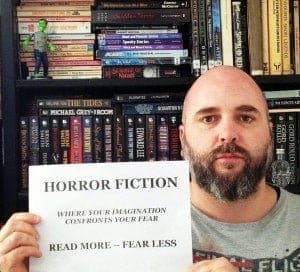 Meet William Cook: Horror writer, poet, dad, delver into the darkest of minds and ghost lover (her name is Gladys). READ ON!
Meet William Cook: Horror writer, poet, dad, delver into the darkest of minds and ghost lover (her name is Gladys). READ ON!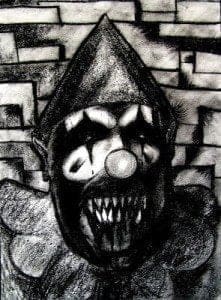 Ruschelle: Fun question- Speaking of Clowns, they’re hot right now thanks to the remake of Stephen King’s It and Twisty the Clown from AHS. If you could be any killer clown for a day (and I can’t prove you aren’t now but if I find out you are- I won’t tell), which do you identify with and why? GO.
Ruschelle: Fun question- Speaking of Clowns, they’re hot right now thanks to the remake of Stephen King’s It and Twisty the Clown from AHS. If you could be any killer clown for a day (and I can’t prove you aren’t now but if I find out you are- I won’t tell), which do you identify with and why? GO. William: Ummm – I try to avoid being ‘probed’ at all costs so I guess I’ll have to go with Gladys. She sounds like a nice ol’ gal. Ghost sex is nothing new to me (winks).
William: Ummm – I try to avoid being ‘probed’ at all costs so I guess I’ll have to go with Gladys. She sounds like a nice ol’ gal. Ghost sex is nothing new to me (winks).